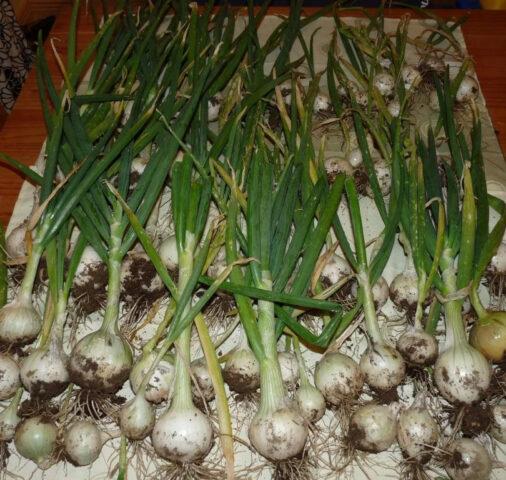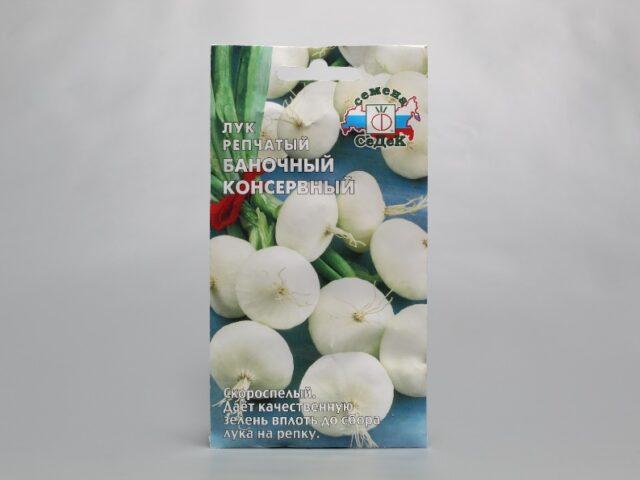Content
Various varieties of white onions can be found at the food market. Each type has a number of advantages and disadvantages. When choosing a specific variety, you should pay attention to the characteristics of the vegetable, which is known for its ease of care and delicate taste.
Description of white onion
The variety belongs to the Amaryllidaceae genus, which includes more than 1000 different plants. Externally, the bulb is white, round in shape, large.
The taste of the pulp is tender, practically not bitter, so the crop is often grown to be added to salads. In composition, it is practically no different from ordinary varieties. But it should be borne in mind that the product has a milder taste and a less pungent aroma.

Salads to which white onions are added are recommended to be eaten immediately so as not to lose the nutrients of the vegetable.
Varieties of white onion sets with photos and descriptions
The culture is not as widespread around the world as the yellow and red varieties of onions, but breeders have managed to obtain specimens with decent characteristics. To decide on the choice of variety, it is recommended to study its description.The principles of planting and caring for onions are similar.
Alba
The crop is high-yielding, mid-season, resistant to bolting. The head is round, white in color, dense, with juicy pulp without bitterness. The weight of each turnip reaches 180-200 g.

The Alba variety is characterized by stable yield and good shelf life for up to six months
If you plan to cultivate white onions as an annual, then seedlings must be produced in March. To grow a two-year-old plant, the seeds are placed directly in the ground in early May.
Nevada
An early ripening variety with beautiful rounded bulbs. The weight of each reaches 75-90 g. The heads are covered with dry white scales on top, the neck is single-budded and thin. The taste of the fruit is semi-sharp. The productivity of the Nevada variety is 186-388 c/ha. Before harvesting, the ripening rate is 92%.

The Nevada variety was included in the State Register of the Russian Federation for the North Caucasus region
Comet F1
The culture was developed in the Netherlands. It was registered in the State Register in 2003. According to recommendations, white onions can be grown in all regions.
The vegetable is round in shape, compact in size: the weight of each varies from 50 to 70 g. The upper scales of the bulbs are pure white, inside the pulp is the same color, slightly pungent in taste. The hybrid is characterized by up to 8.2% sugar content and up to 10% dry matter.
The crop has an average ripening period: turnips can be dug up 115-125 days after germination.

The productivity of the Comet hybrid is up to 186 c/ha
Snowball
A variety with snow-white tasty pulp. The husk is light in color on top. Due to the low pungency content, it is preferable to combine onions with vegetables and meat.
The average weight of each turnip is 100-140 g; the shape of the vegetable is spherical, leveled, single-budded.
The Snowball variety is mid-early: you can dig up the bulbs 105-110 days after planting. The plant has good transportability and shelf life: its commercial properties and taste are preserved for six months.

The yield of white onion Snowball is 3.2-4.7 kg per 1 m2
Stardust
The plant is powerful, with erect leaves and a thick neck. The feathers are dark green, with a “waxy” coating. The bulbs come in different shapes: from round to diamond-shaped and flattened. The scales on top are white with a silver color. The weight of each fruit varies from 40-60 g.
Hybrid Stardust is an early ripening variety. You can eat vegetables 68-85 days after germination. The climatic characteristics of the region where the plant is cultivated should be taken into account: in some areas the onion ripening process increases to 90-100 days. This is due to the fact that the hybrid does not like sudden changes in temperature and cold weather.

The yield of the Stardust variety varies from 4 to 6 kg/m2
White Jumbo
The culture is known for its size. With proper care, specimens weigh 100-130 g. The diameter of the bulb reaches 9-10 cm. They taste mildly spicy and piquant. The top of the vegetable is covered with white scales, 3-4 pieces on each.
The variety is intended for fresh consumption. To get turnips of maximum size, you need to sow seedlings in early March. You can grow the crop directly in open ground, but you should take into account the climatic characteristics of the region.

The White Jumbo variety can be harvested 100-105 days after planting, and the greens can be cut within 3-4 weeks after germination.
Sierra Blanca F1
The hybrid is characterized by a semi-sharp, delicate taste, so it is best consumed fresh. The scales of the vegetable are white, inside there is juicy pulp of the same shade. It is not recommended to grow turnips for the purpose of long-term storage and further resale.
To obtain vegetables of maximum size, it is recommended to use the seedling growing method. With proper care, the size of each bulb will reach 700-800 g.
The hybrid prefers well-lit areas where there is no stagnant moisture. For maximum yield you need fertile soil, fertilizing and watering.

The Sierra Blanca F1 variety is not intended for long-term storage: the bulb begins to rot 2-3 months after digging
Orizaba F1
A hybrid appeared thanks to breeders from Holland. It is recommended to be cultivated in Ukraine and Moldova. The average ripening time for a vegetable is 118 days.
A plant with a powerful root system, the bulb is white, round in shape, weighing 45-80 g. The pulp has high taste. White onions are resistant to drought and climate change. The only drawback of the culture is the impossibility of long-term storage and transportation.
The hybrid is characterized by a strong immune system: it is resistant to fusarium and pink rot.

The yield of the Orizaba F1 variety is 2.4-3.5 kg/m2
Canning
The variety belongs to early ripening crops.Harvest can be done 65-85 days after the feathers appear. It is recommended to grow the vegetable as an annual in spring and summer from seeds.
The bulbs are round-flat, leveled, covered with dry snow-white scales. The weight of each reaches 40-60 g. The vegetable is dense to the touch and slightly spicy in taste. You can also use greens in your food.
The variety is characterized by low maintenance and strong immunity.

Bulbs of the Canning variety are ideal for whole-fruit canning
Ala
The variety belongs to mid-season crops. From the appearance of the first shoots to the complete lodging of the leaves, 95-110 days pass. It is recommended to grow white onions as an annual plant from sets. Cultivation of the variety as a winter variety is allowed.
The bulb is flat-round, dense to the touch, weighing up to 110 g. On the outside it is covered with white scales. The vegetable tastes sweet, with a slight pungency. It can be used fresh or grown for further storage.

The yield of the Ala variety is 4-5 kg/m2
Barletta
White onions are early ripening: turnips can be dug up 65-90 days after emergence. It is recommended to grow the variety as an annual from seeds.
Ripe vegetables are round, even in shape, weighing 40-60 g. The outside is protected from external factors by white dense scales. The inside of the onion is the same color, medium density, delicate taste and medium spiciness.
The main value of the variety is the ability to form a full-fledged turnip in one season. All bulbs ripen together, the feather can be used for greens.

The vegetable is intended for adding to salads; small specimens are recommended for whole-fruit canning.
White King
A universal-purpose crop, adapted to a wide variety of growing conditions.White onions are frost-resistant and have high yields.
If you grow a vegetable by sowing seeds, then at the end of the season you can dig up large oval-shaped turnips. The weight of each of them will reach 100-150 g.
The plant is powerful, with a strong root system. The bulbs are covered with white scales, dense to the touch, and are characterized by good transportability and keeping quality. The taste is semi-sharp.

Early ripening White King onion: harvesting can take 65-90 days
Silver Prince
The crop is mid-late, but high-yielding. Round onion, medium size. The weight of each specimen can reach 50 g. The dry scales of the vegetable are silvery-white, and the juicy ones are white. The taste is semi-sharp.
The plant can be planted not only for the purpose of growing turnips, but also for producing greenery. The vegetable is rich in nutrients; it can be eaten fresh, added to dishes, or dried to increase shelf life.

To obtain a Silver Prince onion harvest, proper care is required: watering, fertilizing and weeding
Conclusion
All varieties of white onions have a number of advantages and disadvantages. The main disadvantage of the culture is its low transportability and keeping quality compared to other onion representatives. Among the advantages are high taste, productivity, strong immunity. Planting and caring for onions is standard, so every gardener can provide conditions for cultivating the plant.








